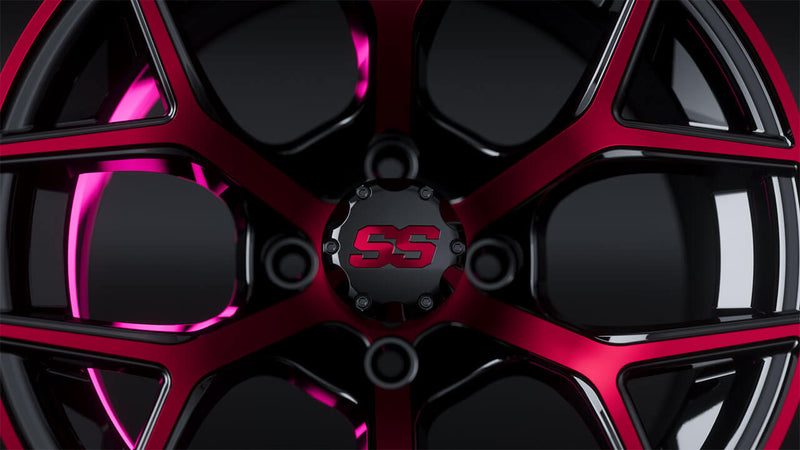How to pick the right golf cart tires when the temperature drops
Slippery leaves, frosty mornings, and packed gravel can make a golf cart feel skittish fast. The good news is you can tune grip and control with the right tire pattern, ply rating, and pressure. Here’s a clear, no-nonsense guide from RM Cart to help you stay surefooted all fall and winter.
Start With How and Where You Drive
Before you look at tread, be honest about your routes.
- Mostly pavement and neighborhood paths: Choose street or DOT tires for quiet rolling and predictable braking
- Mixed use with wet leaves and occasional gravel: All-terrain tread adds bite without feeling harsh on pavement
- Trails, hills, and off-course chores: Go more aggressive with larger lugs and reinforced shoulders for climbing and ruts
Browse options: Tires • Ready-to-ride Tire & Wheel Combos
Tread Patterns That Work in the Cold
Cold rubber stiffens, so tread does more of the work.
- Street/DOT patterns: Shallow grooves and continuous ribs shed water and feel planted on pavement. Great for morning dew and light frost where you need consistent contact
- All-terrain patterns: Chunkier lugs and open voids clear leaves and slush. Look for siping or fine cuts in the lugs for extra edge grip on cold, smooth surfaces
- Turf patterns: Gentle on grass, but not ideal for slick leaves or icy sections. If you run turf, slow down and keep pressures dialed
Pro tip: If wet leaves are your main enemy, choose an A/T pattern with staggered shoulder blocks. That extra edge helps the cart “bite” when the middle of the tread is sliding.
Ply Rating and Ride Feel
Ply rating is a shortcut for strength, not literal layers. 4-ply tires are lighter, more compliant, and offer good road comfort with easier steering.
If your cart is mostly street duty with the occasional gravel drive, 4-ply is the suitable choice for your neighborhood cart.
Tire Pressure in Fall and Winter
Pressure drops as temperatures fall. Low pressure feels cushy, but it lengthens stopping distances and makes steering tricky.
- Check pressures monthly through winter
- Set pressures for the cold garage temperature, not the warm afternoon
- If the cart sits for weeks, roll it a few feet to avoid flat-spotting
Need an easy upgrade path: shop Tire & Wheel Combos and select the pressure range printed on the sidewall once installed.
When to Swap to A/T vs Street
Think season, not just surface.
- Wet leaves on pavement: Choose an A/T with siping and smaller center blocks for edge grip without a loud ride
- Cold, dry hardpack: Street tires can work if the path is smooth. If it’s washboard or rutted, A/T wins for stability
- Frosty mornings that melt by noon: Street or DOT tires with good water evacuation keep braking consistent as the surface changes
- Mostly trails or hunting property: A/T with reinforced shoulders gives you climbing traction and protects the sidewalls
Still unsure? Split the difference with a mild A/T that has tighter center ribs and open shoulders. It behaves on pavement and claws through leaves when you need it.
Diameter, Clearance, and Lift Kits
Bigger tires add clearance and stability, but they also demand space. Many carts can run 20” street tires at stock height. 22–23” A/T sizes often need 3–6” of lift depending on the model and wheel offset.
- Confirm fender and steering clearance at full lock
- Check brake cable routing and mud flaps if equipped
- If you plan to go up a size, review fitment notes and consider a quality Lift Kit to reclaim turning radius and ride quality
Simple Upgrades That Make Sense
If you want a straightforward plan, start here.
- Neighborhood cruiser: 20” street/DOT on 12” wheels for smoother ride and crisp braking
- Mixed commuter: 20–22” mild A/T on 10” or 12” wheels for balance of grip and comfort
- Trail-ready: 22–23” A/T with a matched Lift Kit for clearance, approach angle, and stability
You can always fine-tune pressure and wheel offset later. The goal is confident control without making the cart feel twitchy or harsh.
FAQ: Cold-Weather Traction, Answered
Do I need DOT tires in winter?
DOT is about on-road standards, not magic winter grip. Choose DOT if you use public roads. For pure paths and private property, a well-designed A/T can be the better choice.
Radial vs bias ply for cold weather?
Radials usually ride smoother and hold contact better on pavement. Bias can be tougher in rough terrain. For mixed fall and winter routes, radial A/T is a great middle ground.
Can I mix tread types front to rear?
Avoid it if you can. Mismatched grip changes balance and can lengthen stopping distances. If you must mix, keep the better-grip tires on the front for steering authority and braking stability.
Helpful Links as You Plan Your Setup
- Upgrade traction the easy way: Tires
- Mounted, balanced, and ready: Tire & Wheel Combos
- Make space for larger A/T sizes: Lift Kits
Got questions about your routes, fitment, or lift height? We’re happy to help. Reach out on our Contact page and an RM Cart expert will point you to a setup that feels right the first time.







